Analysis: Why Workday® Is Investing in Artificial Intelligence (AI)

Recently, Workday® has been making bold moves in artificial intelligence — acquiring Paradox, Sana; developing AI agents; building its Agent System of Record — all pointing to a clear strategy. But what lies behind this AI investment? And what does it mean for HR, Finance, Payroll, and businesses more broadly?
Here’s a deep dive into why Workday® is going all-in on AI, what the driving forces are, and what implications customers should understand.
Key Drivers Behind Workday® AI Investment
- Customer demand for efficiency and speed
Organisations face pressure to reduce time-to-hire, streamline finance processes, and deliver better employee experiences. Paradox, for example, is explicitly aimed at making hiring faster, more human, especially for frontline/high-volume roles. Newsroom | Workday
Sana’s tools add AI-native search, learning, and agents, enabling employees (and HR/Finance) to find information, learn, and act more quickly. Newsroom | Workday - Competitive necessity in the enterprise software market
As more enterprise systems incorporate AI, Workday needs to ensure it remains relevant, modern, and appealing. Acquiring AI-companies, expanding agent ecosystems, and embedding generative AI helps maintain competitive positioning. Newsroom | Workday+2Newsroom | Workday+2 - Leveraging clean, high-quality data & scale
Workday has access to large volumes of HR, finance, payroll, workforce-planning data. This scale and the quality of those data streams provide a unique opportunity to build powerful AI models. For example, in its generative AI announcements, Workday refers to using “the world’s largest, cleanest set of financial and HR data” which supports accuracy and trust. Investor Relations | Workday - Desire to move from reactive to proactive systems
Organisations want systems that can anticipate needs (employee learning, performance, recruiting demand), surface insights (reporting, forecasting), and automate repetitive tasks. Workday is pushing this through AI agents, predictive workflows, etc. Newsroom | Workday+2Newsroom | Workday+2 - Scaling innovation via acquisitions and partnerships
Rather than building every AI tool in-house, Workday is acquiring companies (Paradox, Sana) and expanding its partner/agent network so clients can choose trusted, enterprise-ready agents with governance. Workday’s Agent Partner Network and Agent System of Record (ASOR) show this strategy. Newsroom | Workday+2Newsroom | Workday+2 - Focus on responsible, governed AI
Because AI can raise risks (bias, compliance, data privacy), Workday is emphasising safety, governance, oversight. The infrastructure being built (ASOR, secure agents, enterprise-grade deployment) is intended to assure customers that AI tools are compliant, auditable, safe. Newsroom | Workday+1
Potential Impacts for Businesses
Here’s what investing in AI by Workday® can mean in practice for different stakeholders:
| Stakeholder | What Could Improve | What to Watch / Prepare |
| HR / Talent Acquisition | – More automated candidate interactions (self-scheduling, chat support)- Faster screening or matching via AI tools (Paradox, HiredScore)- More time for strategic tasks (employer branding, talent pools) | – Adjusting HR workflows to incorporate AI tasks- Ensuring fairness & avoiding bias in AI matching or decisions- Training HR teams on new tools & change management |
| Finance / Planning | – Better workforce & cost forecasting with up-to-date recruiting pipeline data- Reduced manual effort & error from reconciliations and manual data handoffs- More dynamic budgeting as hiring speeds up or slows down | – Aligning data models across HR, recruiting, payroll- Monitoring cost of AI tools vs gains- Ensuring transparent metrics to measure ROI |
| Payroll / HR Ops | – Cleaner data entry (onboarding linked more tightly to recruiting)- Fewer errors due to misalignment/late data- Faster resolution of employee queries (AI agents handling common questions) | – Ensuring data flows smoothly from recruiting → payroll systems- Auditing AI agent actions to avoid misclassification or incorrect responses- Ensuring compliance with local payroll / labor laws (especially relevant in multiple geographies) |
Challenges & Risks to Manage
While the opportunity is large, there are also things companies should keep in mind:
- Data privacy, security, and compliance are critical. AI depends on data; misuse or poorly governed agents can cause reputational or legal problems.
- Bias and fairness — models need checks; HR processes must remain transparent.
- Adoption lag & resistance — employees, HR staff, Finance teams may resist change or distrust automated systems.
- Cost management — AI tools bring licensing / investment costs; organisations need to measure ROI and ensure they’re not overpaying for complexity.
- Integration complexity — legacy systems, local compliance, multiple geographies complicate implementing AI agents well.
Why This Is a Window of Opportunity
- Because Workday® is rapidly building AI into its core platform, early adopters (especially in markets where HR/Finance technology is less advanced) can leapfrog older systems and gain competitive advantage.
- Organisations aligning now will be better placed when features are fully integrated and standardised.
- For those already using Workday®, this is a chance to review their HR/Finance/Payroll setup, ensure data is clean, workflows optimised, and be ready to plug in new AI-capabilities as they release.
Final Thought
AI is no longer optional for enterprise HR/Finance systems — it’s increasingly baked into platforms like Workday®. The “why” behind Workday’s AI investment centres on delivering speed, efficiency, insight, and more human-centred experiences.
For organisations — whether in established markets or emerging ones — the companies that prepare now, adopt responsibly, and align strategy, people, and tech will benefit the most.
If you’re exploring how Workday® AI innovations can strengthen your HR operations, get in touch with us at Clientside. We’d be happy to share insights from across the Workday® community and help you prepare for what’s next.



